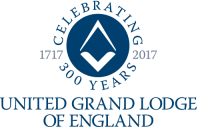Air Mechanic 1st Class William Frisken
William was a Freemason, member of Lodge Temperance 2557 and one of our forgotten war heroes. He is not listed in the Lodge Temperance WW1 Roll of Honour although the Lodge registers clearly show he was on war service.
William was proposed as a fit and proper person to be made a Freemason by Wbro John Harris, IPM and seconded by Bro Roderick Urquhart, SW at the Lodge Temperance 2557 meeting held at the Assembly Rooms on 17th January 1916. He was a 29 year old Tailor’s Cutter living at 43, Gainsborough Grove, Arthur’s Hill, Newcastle upon Tyne.
A successful ballot was held at the meeting on 21st February 1916 and William was initiated into the mysteries and privileges of Ancient Freemasonry at the meeting on 20th March. He was passed to the second or Fellowcraft degree on the 15th May and raised to the Sublime degree of a Master Mason on the 19th June 1916.
William Jnr was born on 3rd April 1886 in Orphir, a village and a parish in the South of Orkney, six miles north of the Scottish mainland, the son of William and Jessie Frisken. William Snr was a miller and farmer born in Orphir and working and living in the Kirbister mill cottage with his wife Jessie Liddle, a farmer’s daughter also from Orphir. Kirbister Mill was a meal mill built from random rubble with a slate roof. The mill had 2 kilns and 2 waterwheels, for milling and threshing respectively. William and Jessie had at least 6 children including:
George Barclay Frisken (28/12/1880 – 19/01/1939)
Andrew Frisken (19/02/1883 – 02/01/1945)
William Frisken (03/04/1886 – 1963)
John Frisken (b 1889)
Jessie A L Frisken b 1892)
An Infant Son who died 10/03/1897
William Jnr married Margaret Jane Henderson on 13th April 1914 in Edinburgh. William was a tailor’s cutter and Margaret, or Maggie as she was known, a tailor’s machinist. Sometime before 1916 William and Maggie moved south to Newcastle upon Tyne and set up the family home at 43, Gainsborough Grove in Arthur’s Hill where they had their son – William Leonard Frisken in 1916.
The Government had introduced the Military Service Act on 27 January 1916 and all voluntary enlistment was stopped. All British males were now deemed to have enlisted on 2 March 1916 – that is, they were conscripted. Conscripted men were no longer given a choice of which service, regiment or unit they joined.
Thirty year old William was called up on 7th November 1916 for the duration of the war and was assigned to the Royal Navy as an acting air mechanic 1st Class, service number F23368 with the Royal Navy Air Service (RNAS).
He was initially based at the President II in Crystal Palace and then in Great Yarmouth. President II was a “stone ship” or shore establishment and was the accounting base for the RNAS. It’s likely that William got his initial training at Crystal Palace before transferring to Great Yarmouth. As it was an accounting base, someone listed at President II could be located somewhere too small for its own paymaster so perhaps William was on detached duties around the coast. The airplanes of WW1 were generally bi-planes (2 wings) that were made of wood trusses with fabric laid over and glued in position. William’s peace time occupation of tailor would have qualified him for repair and replacement of the fabric.
On 1 April 1918, the Royal Naval Air Service and the Royal Flying Corps amalgamated creating the Royal Air Force and William was transferred to the RAF at this time. He remained in Great Yarmouth until 25th January 1919 when he was moved to Ripon. He was transferred to the RAF Reserve on 23rd February 1919 and discharged on 30th April 1920.
After the war, William set up a Ladies and Gent’s Tailors at 1, Saville Row, Newcastle upon Tyne and his wife Maggie, being a tailor’s machinist, is likely to have worked with him. They continued to live at 43, Gainsborough Grove but by 1929 had moved to 33, Baxter Avenue, Fenham where they remained.
Sadly, Maggie died on 29th July 1941, but William aged 60, went on to marry Selina Dees, 20 years his junior, in 1945. They had one son in 1947.
William suffered from ill health in later life and spent several periods in Hunter’s Moor Hospital, a neuro rehabilitation hospital for people with brain injuries or problems. He died in 1963 aged 76.
Become a Mason
Check out our FAQs



